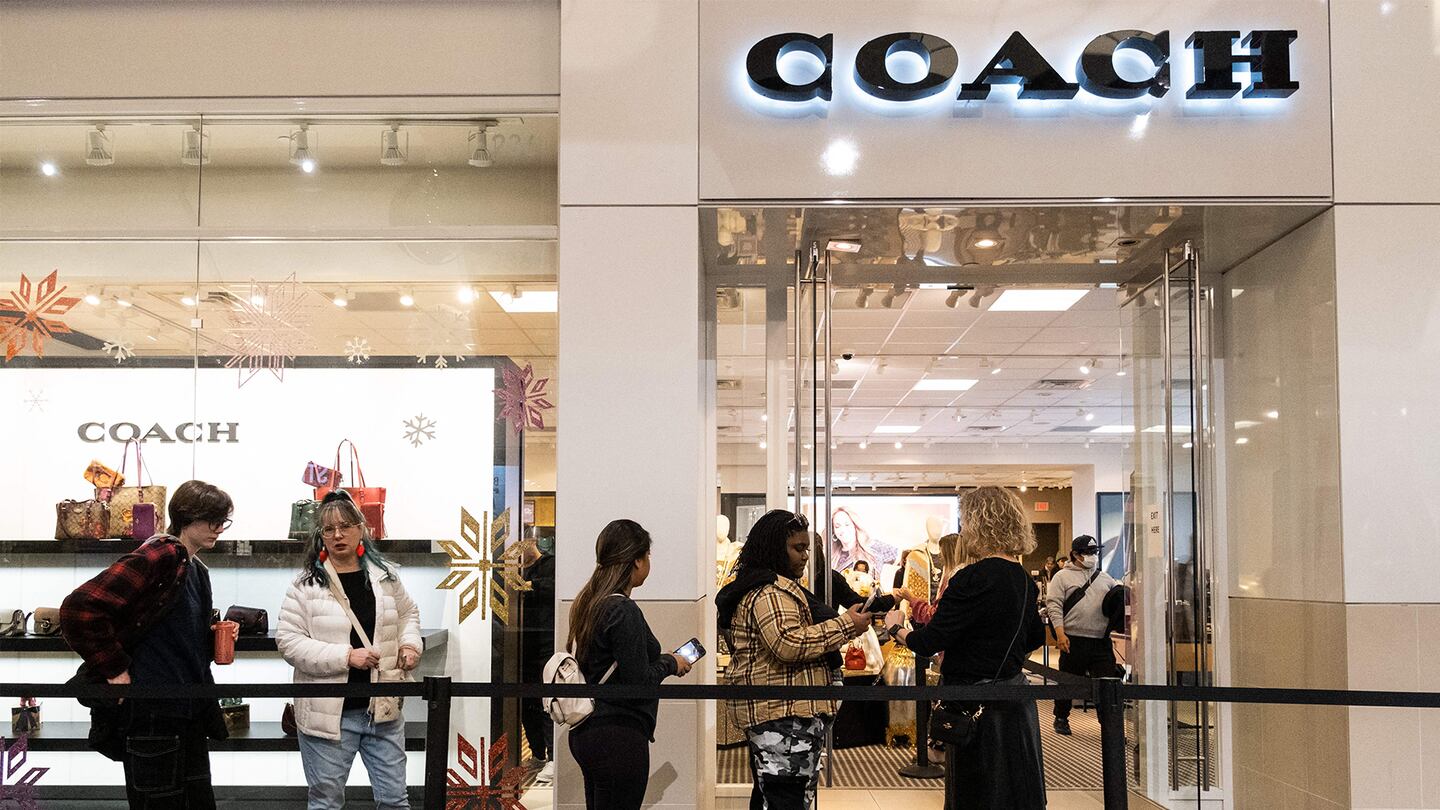
The Business of Fashion
Agenda-setting intelligence, analysis and advice for the global fashion community.

Agenda-setting intelligence, analysis and advice for the global fashion community.

If America’s economy is in a slump, someone forgot to tell its biggest fashion retailers.
Coach-owner Tapestry Inc. shares soared Tuesday after the company posted record earnings — net income of $318 million on $2 billion in sales, a 5 percent drop from last year. Ralph Lauren also impressed with a slight bump in revenue year-over-year as shoppers kept buying its apparel even at higher prices.
Record results are all the more remarkable at a time when consumer spending has softened; in November and December, retail sales in the US dipped on a monthly basis, a direct signal that the economy is in downturn. At some point in the last few months, most large fashion companies have told investors to brace for slower growth.
In some cases, those predictions have come to pass: Earlier this week, Michael Kors-owner Capri reported a six percent sales decline in its most recent quarter, and slashed its 2023 profit forecast. Shares plunged 24 percent.
ADVERTISEMENT
What’s separating the downturn’s winners and losers? It mostly comes down to strategies these companies implemented well before inflation took off and the Federal Reserve began hiking interest rates. Unlike Capri, Tapestry and Ralph Lauren were in control of their products’ pricing. Tapestry generates most of its sales from its own website or stores, while Ralph Lauren prepared for its wholesale partners’ holiday sales heading into the season. Capri, on the other hand, fell victim to the rampant discounts at its department store partners, where sales declined 20 percent.
“We were disappointed with the performance of our global wholesale revenue in the quarter,” chief executive John Idol said in the earnings call Thursday.
Tapestry and Ralph Lauren also emphasised products that are less seasonal, and therefore less likely to have to be marked down, analysts said. Coach, for instance, has trimmed its overall assortment to focus on best-sellers, like its Tabby bag, that never have to go on sale.
“The fact that we’re 90 percent direct-to-consumer really stands out,” Tapestry chief operating and finance officer Scott Roe told BoF in an interview Thursday. “We get immediate feedback [from shoppers] and we use that information to continue to drive on price.”
One key reason why Tapestry was able to keep margins high at a time when discounts are rampant in fashion is because of its limited distribution in department stores. The vast majority of sales are generated in its own brick-and-mortar fleet of Coach, Kate Spade and Stuart Weitzman stores as well as their respective online shops, which allows the conglomerate to avoid the markdowns typical among wholesalers.
“One of the lessons here is to really hold the line in discounting,” said Neil Saunders, managing director at GlobalData. “Discounting can be really damaging to the brand and you end up diluting your margins.”
Compared to pre-pandemic levels, Coach handbag prices are up about 30 percent, according to Todd Kahn, president and CEO of Coach.
Getting the assortment right is crucial right now as retailers continue to reckon with high levels of inventory across the board.
ADVERTISEMENT
At Ralph Lauren, while net income fell compared to last year, prices, as measured by AUR, or average unit retail, grew by double digits, CEO Patrice Louvet said in the earnings call Thursday. The brand attributed this to its ongoing “brand elevation” efforts, which has resulted in a better mix of products.
“They’re really on the ball with product trends right now,” said Saunders. “There’s a balance between casual and formal.”
For other retailers, marketing is another way to maintain brand elevation, according to Simeon Siegel, retail analyst at BMO Capital Markets.
“At the end of the day, companies need to decide how they want to allocate to drive customers in,” he added. “One way is through promotions, and another is through storytelling and marketing.”
Ultimately, all three companies have focused on pricing discipline, pulling back on distribution and brand elevation overall. Tapestry is the farthest along on this process, analysts say, while Ralph Lauren is the freshest.
“This is the right thing to do in the more premium and luxury spaces,” Saunders said. “You have to accept there is a slowdown but manage the brand to maximise margin and protect the image of the brand even at the expense of sales.”
 Opens in new window
Opens in new windowThe US luxury group that owns Coach, Kate Spade and Stuart Weitzman is focused on customer-centric tactics and products to grow in turbulent times, says the CEO in an interview for The State of Fashion 2023.
Joshua Schulman’s surprise exit from the Michael Kors and Versace owner puts pressure on John Idol in his quest to build an LVMH competitor.
The Ralph Lauren brand, which pioneered the lifestyle concept, must be revamped.

Cathaleen Chen is Retail Correspondent at The Business of Fashion. She is based in New York and drives BoF’s coverage of the retail and direct-to-consumer sectors.
The company, under siege from Arkhouse Management Co. and Brigade Capital Management, doesn’t need the activists when it can be its own, writes Andrea Felsted.
As the German sportswear giant taps surging demand for its Samba and Gazelle sneakers, it’s also taking steps to spread its bets ahead of peak interest.
A profitable, multi-trillion dollar fashion industry populated with brands that generate minimal economic and environmental waste is within our reach, argues Lawrence Lenihan.
RFID technology has made self-checkout far more efficient than traditional scanning kiosks at retailers like Zara and Uniqlo, but the industry at large hesitates to fully embrace the innovation over concerns of theft and customer engagement.